Consumers are traditionally conceived as being at the end of a linear value chain that is the backbone of the industrial agri-food system. There their proverbial power lies. They engage with the food system using their wallets, but are otherwise unable to participate in issues outside what’s considered their domain, which is often limited to the price of products, their availability and safety. And although what happens “upstream” such as resource use and labor practices are factors that shape these important aspects, they remain invisible or opaque to consumers downstream, who are nonetheless told that they can make changes within the system and encourage innovations through what they choose.
 Never mind that this power has a very narrow focus. The seemingly endless array of products coming from the current system are mostly variations of the four biggest commodities—wheat, soy, rice, and corn—and behind the tens of thousands of brands are the same giant food companies, growing in power and lacking in accountability. In this corporatized milieu consumer choice has become all about choosing from what industry wants consumers to choose from, i.e., what’s most profitable, and staying in that lane. Even the rise of conscious consumerism, while well intentioned for inquiring into upstream practices and demanding industry to do better given the multiple environmental, social and economic crises it’s implicated in, reinforces this constrained position of consumers as simply economic actors, limiting not only their ability to make truly transformative changes but especially who are able.
Never mind that this power has a very narrow focus. The seemingly endless array of products coming from the current system are mostly variations of the four biggest commodities—wheat, soy, rice, and corn—and behind the tens of thousands of brands are the same giant food companies, growing in power and lacking in accountability. In this corporatized milieu consumer choice has become all about choosing from what industry wants consumers to choose from, i.e., what’s most profitable, and staying in that lane. Even the rise of conscious consumerism, while well intentioned for inquiring into upstream practices and demanding industry to do better given the multiple environmental, social and economic crises it’s implicated in, reinforces this constrained position of consumers as simply economic actors, limiting not only their ability to make truly transformative changes but especially who are able.
What then is the place of consumers in agroecology? Centering peasant farmers and indigenous peoples, agroecology has been gaining prominence as the viable and holistic alternative to the current food system, and its development over the decades has focused largely on the aspect of production, and rightly so. How can consumers contribute to its development and mainstreaming? To what extent can consumer demand for agroecological products facilitate the transition to food systems transformation?
Here are lessons and insights from our learning exchange “Just Eats: The Role of Consumers in Agroecology,” shared by IPAM field learning sites and partners from Bolivia, the Philippines, Laos, and Pakistan based on their experience regularly engaging with consumers.
Shifting consumer identity
Horrified that Filipino farmers are among the poorest of the basic sectors and periodically experience hunger, Good Food Community strives to create a local and alternative food network to meet the food and nutrition needs of farmers and consumers “based on solidarity, justice, and love—not just on the market,” shares its Charlene Tan. Good Food practices Pamayanihan, its local adaptation of community-supported agriculture (CSA), which promotes diverse organic production among small-scale farmers and invites consumers to become co-producers of the food production, with a stake and active role in it, and sharing in the risks, rewards, and responsibilities of food production.

Good Food is based in Metro Manila, a megapolis in the major island of Luzon in the Philippines, and citydwellers rarely know anything about how the food gets on the plate. “In the city, corporations practically control your life, we don’t feel our own chains. Consumption is alienating and stratifying, you get what you want based on what you can afford, how much you have. Pamayanihan is our agroecological practice as coproducers of our food system, believing we all have a responsibility towards each other to make sure we are fed and have wellbeing.”
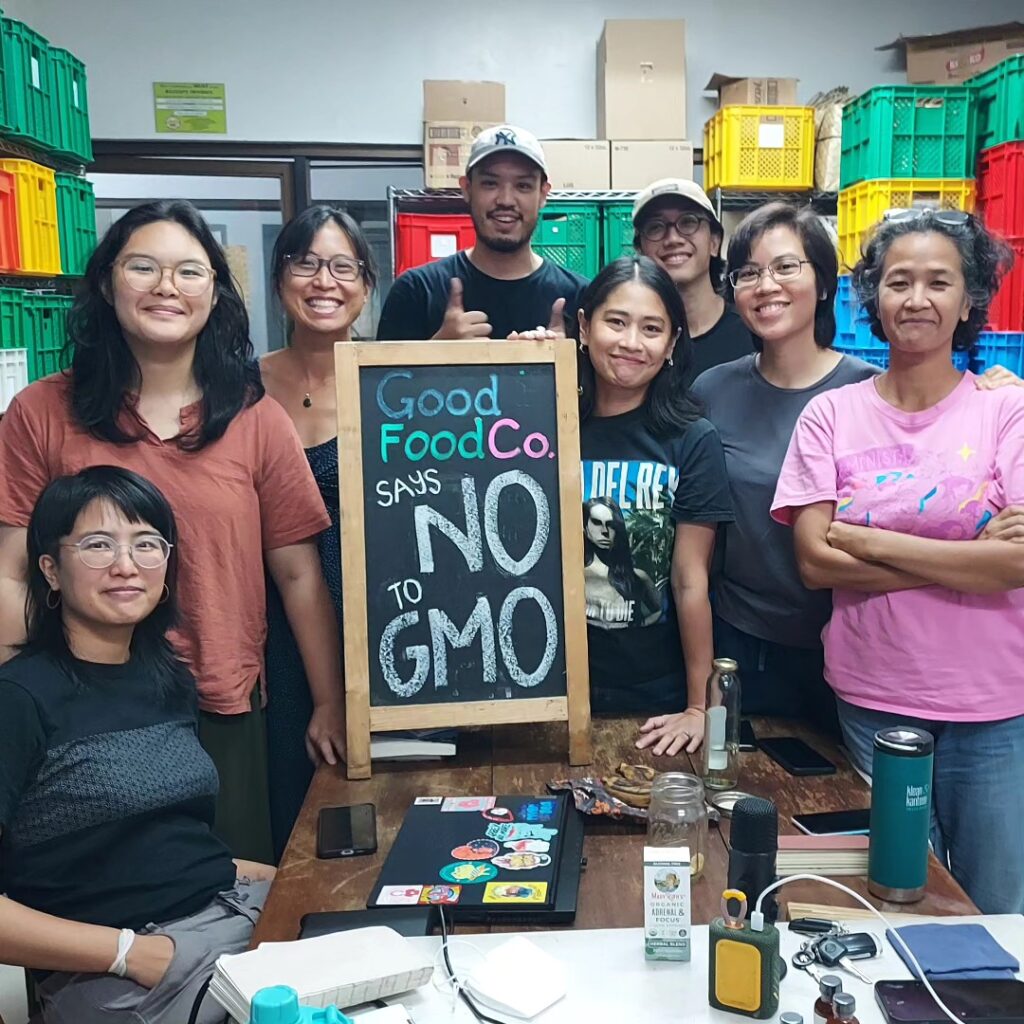
Introducing the idea of co-production means recognizing the concept of interdependence in a world that favors individualism and competition. A farmshare subscription is the locus of solidarity for the community members, and allows Good Food to enter into purchase guarantee agreements with the farmers that provide them with a fair and stable income so they can focus on growing food sustainably while prioritizing freshness and flavor. Subscribers are assured of a weekly basket of nutrient-dense biodiverse seasonal produce, and the community subsidizes the communal kitchens in urban poor areas. Good Food’s work centers on restoring the communal aspect of food—which has been eroding as diets and lifestyles modernize and change—through farm visits, collective gardening, community kitchens and community meal preps, Sunday markets, education and advocacy, among many others.
“Going to the farms, seeing the faces behind the vegetables, being in dialogue with the farmers, eating the harvest, we realize what it takes to put food on the table. Agroecology includes consumers in the struggle for land and food justice. We learn that our health is tied to the farmer’s health and soil health. We are nourished by our social practice,” says Charlene.
Growing food literacy
While demand for food grown naturally and without chemicals is increasing in Pakistan, “there is no certainty in terms of what is in the market,” says Nasira Habib of Khoj – Society for People’s Education and Organica Pakistan. “The food cannot be traced to its origin, there is no direct access to the farm” so that one can be sure. She adds that conventional consumers only have a vague idea of what ‘organic’ is and do not know the many important dimensions of the term, such as its connection to food safety and security, environmental sustainability, and even physical and mental wellbeing.

To close this gap it is essential for consumers to learn to grow their own food as well, and learn from it firsthand the multiple beneficial impacts associated with biodiverse organic production. Urban food gardens make these benefits available to people in more urbanized areas while connecting them to a broader movement and communities of practice to counter the alienation and disconnection with food, the soil, nature, and community that is manifest in the city.

Khoj hopes to create one thousand food gardens in Pakistan, and has been able to grow 70 so far. Nasira has seen how home-garden consumers now have access to a wide variety of nutritious native fruits and vegetables. These “gardens of abundance” as she calls them have facilitated food exchanges among the home growers who find themselves with surplus harvests. “They can form a network of home food growers and together learn to celebrate food and become part of a community.”
The food gardens also become a way for the Pakistanis to learn about the importance of soil to food, and therefore to life, as well as the harms and hazards of chemical agriculture. “There is a relationship between soil health and human health, and consumer education is urgently needed. As an educationist, Nasira has been tireless at sharing knowledge and skills through print and online publications, as well as research, using her own home food garden as a living laboratory.
Creating alternative markets
Food provisioning outside corporate value chains is essential to engaging consumer support for agroecology. Such spaces are usually small in scale, characterized by direct farmer-consumer trading or shorter supply chains, and rooted in specific territories. Moreover, they are spaces where relationships between the food producers and consumers are built and strengthened, allowing for trust, a sense of fairness, and mutuality to deepen over time. Such values are hospitable to creating support for agroecological food practices, where benefits can be immediately felt by the proximate communities such as cleaner air, better access to safe food, clean water, more equitable access to food, farmer autonomy, and a fairer share of the economic benefits.
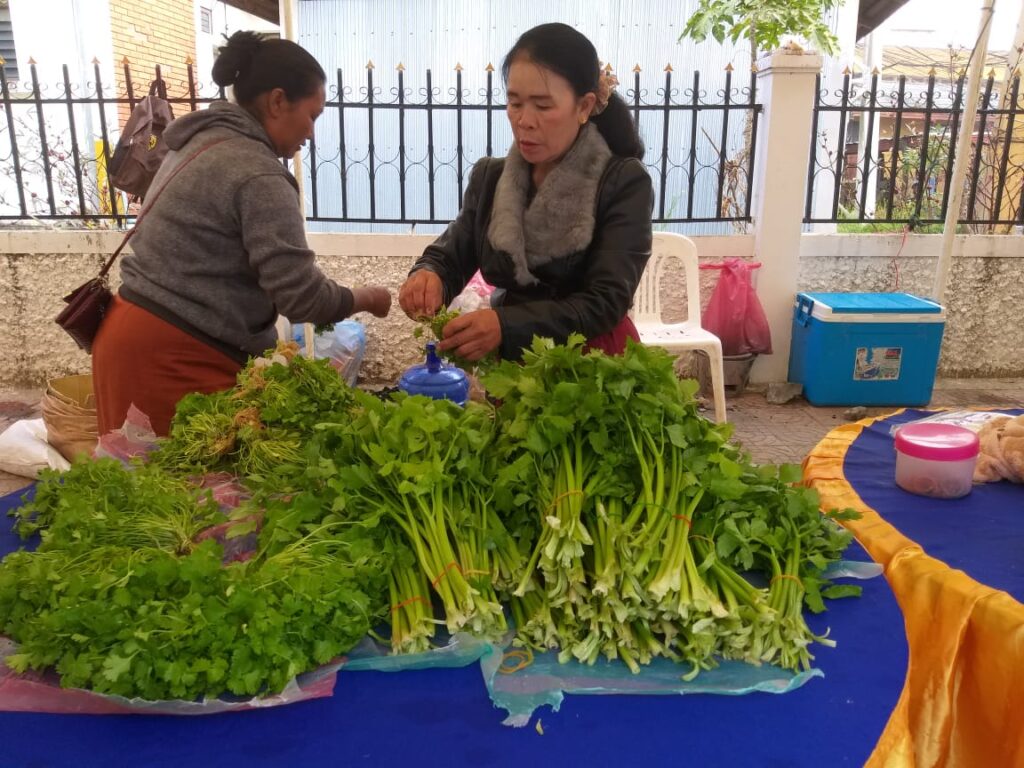
Laos is an agricultural country where more than 80% of the population work as small-scale farmers, and according to Thongdam Phongphichith, co-director of Sustainable Agriculture and Environment Development Association (SAEDA), developing local markets is critical to the development of organic agriculture. In these local markets, farmers and communities set their own local organic standards to guarantee safe diverse food, and the creation of such standards rely on a strong trusting relationship between the farmers and the consumers.
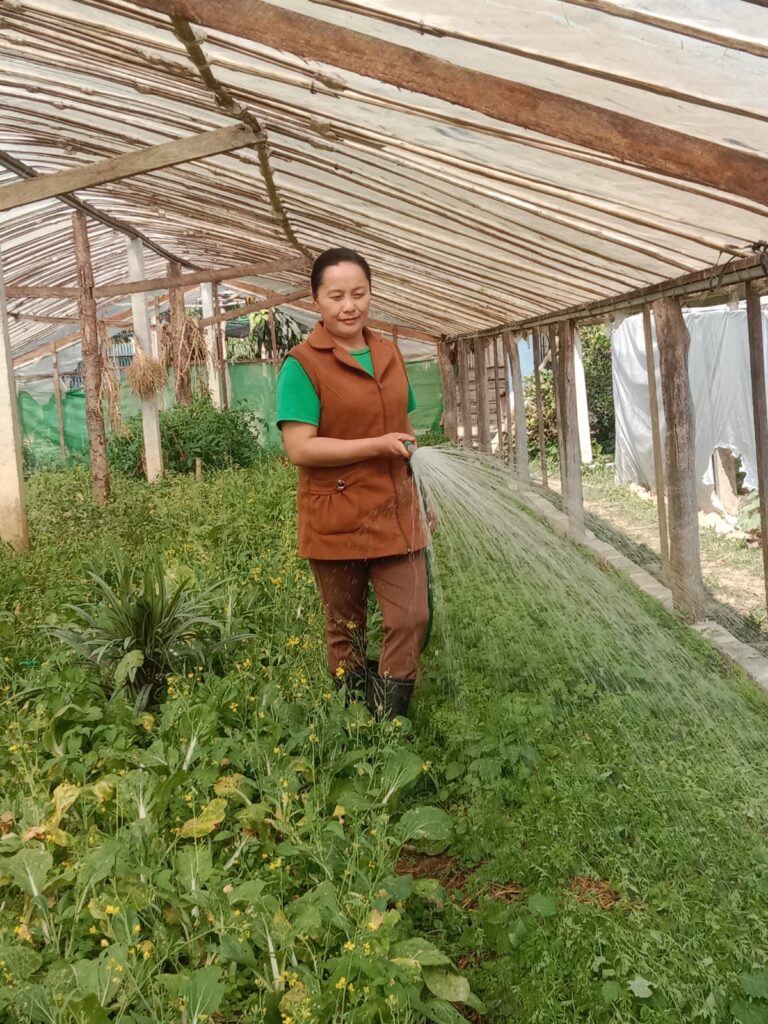
SAEDA’s program Commercial Organic Farming and its Institutionalisation (COFI), held across five districts in the province of Xiengkhouang, helps improve the income of smallholder farmers through organic farming and then connects them to fair markets for their agroecological produce. Under agroecology, consumers are also considered a form of social support for farmer resilience and empowerment. Local markets extend beyond the transactional and into the transformational aspect of the farmer-consumer relationship.
Building a consumer movement
“If you have eaten anything that is processed or natural, it has to do with relationships that exist,” says María Julia Jiménez of Movimiento Agroecológico Boliviano (Bolivian Agroecology Movement or MAB). “Agriculture is a system, and there’s cause and effect in the relationships within it, so it is important to bring back systemic thought.” This means including consumers as vital to the interdependent interactions within the food system versus the antiquated idea of consumers placed merely at the end of a linear chain, disconnected from the rest of its many aspects. “By studying these relationships over the structures of the food system, we are able to understand complex situations in easier ways and from a holistic point of view.”
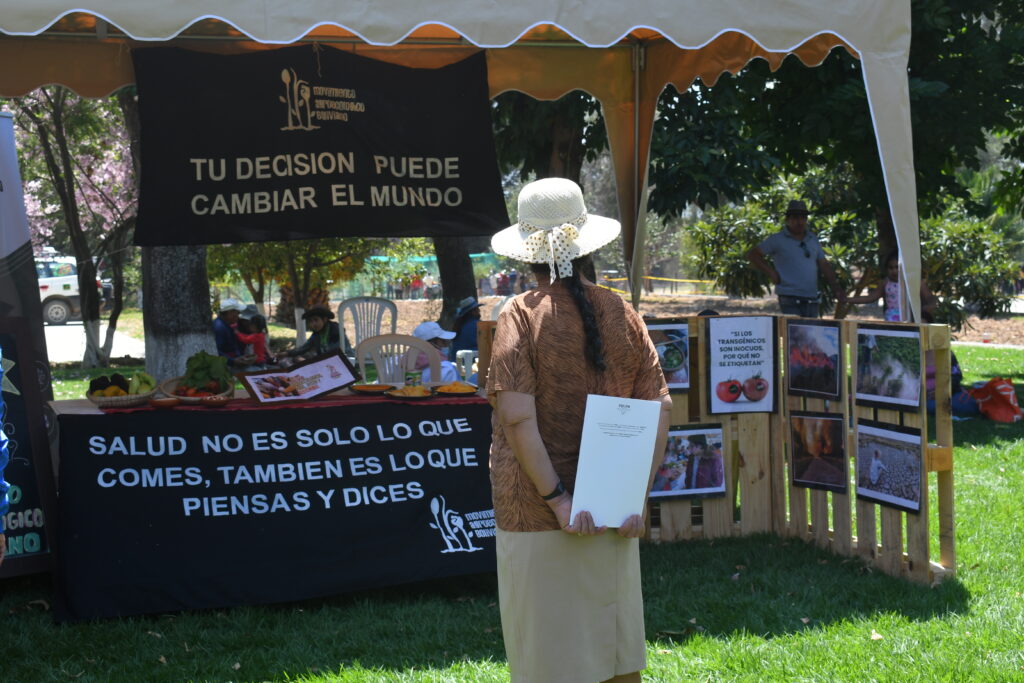
It is a paradigm shift, given the dominance of the current food system, but a systemic approach is already being practiced by many communities. In Bolivia this systemic approach has allowed MAB and its partner Colectivo de Consumidores Conscientes (CCC or Conscious Consumers Collective) to actively engage consumers in movement building for the food system. “We are fighting the same fight.” María Julia emphasizes that such alliance between farmers and consumers is possible only when they are able to connect directly with each other versus the long supply chains that are very effective in alienating stakeholders not only from each other but from their own agency within the food system.

Among the victories of the consumer movement in Bolivia is the inclusion of the people’s right to healthy food and water in the Constitution, the consumers’ right to have control over organic food, as well the right to a clean and healthy environment, where the people can take legal actions against attempts to breach or destroy these entitlements. The notion of food sovereignty has been enshrined in their Constitution where the people have the right to produce, distribute and consume nutritious, culturally appropriate food in a way that is ecologically sustainable.
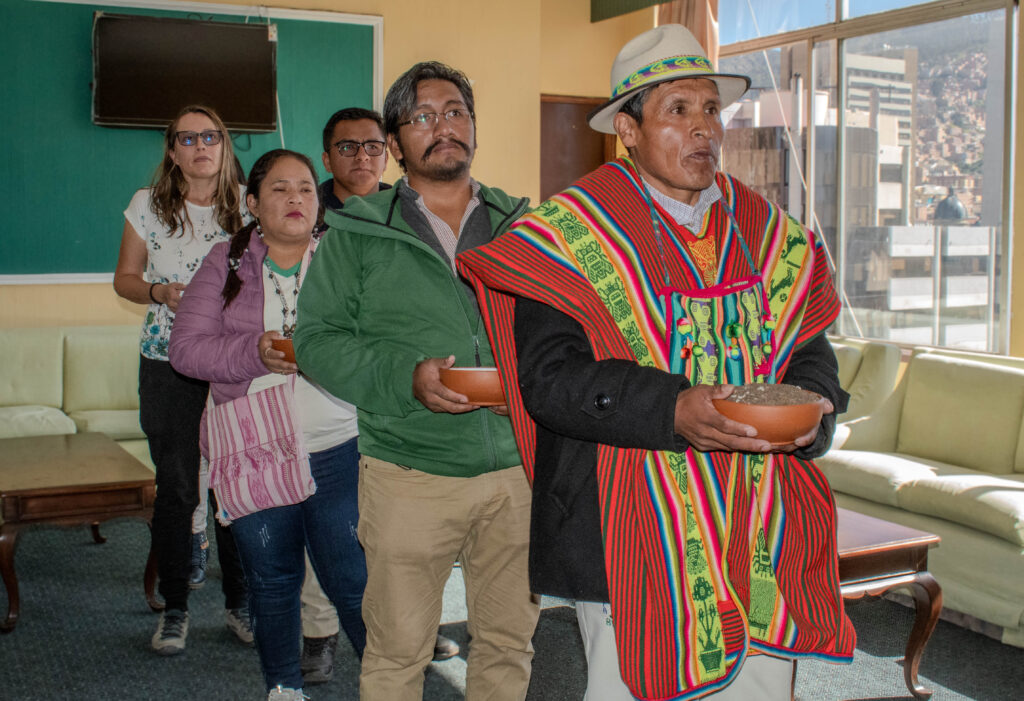
“We need to create a new norm for healthy eating,” says Rita Saavedra of CCC, who joined María Julia in the learning exchange. This new norm not only looks into the nutrient profiles of foods, although that is still important, but must also connect personal and public health goals with agroecology, given how pesticides and genetically modified organisms have acute and chronic health impacts on producers and consumers. For instance, there is growing evidence that the neurodegenerative disease Parkinson’s is linked to agrochemicals, and the bioaccumulation of pesticides up the food chain can result in dreaded health issues. MAB and CCC are mobilizing producers and consumers to fight the lifting of taxes on agrotoxins and the entry and use of transgenics.
“Consumers are diverse too. We believe that agroecology can meet the diverse needs of different kinds of consumers,” Rita says. MAB successfully established the National Committee of Agroecological Consumers earlier this year in La Paz, Bolivia. “Feeding the people is political, and so it requires participation from the State. This means that consumers need to be very vigilant about enforcing our rights and, in the absence of public policies that protect the consumers, amplifying the issues that face our food system.”








Discussion about this post